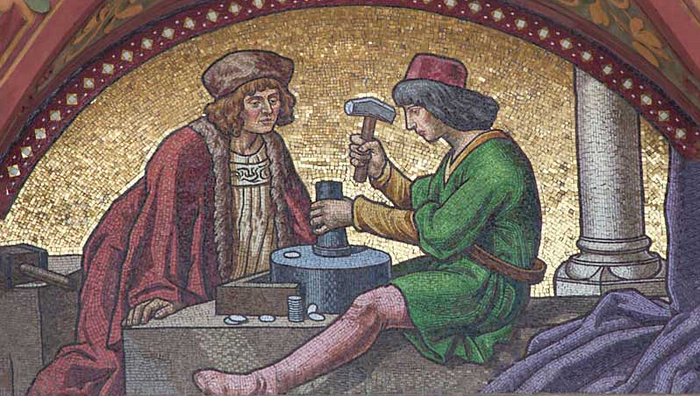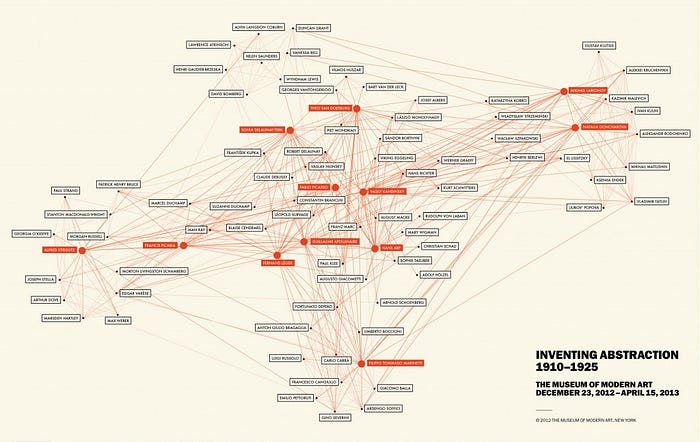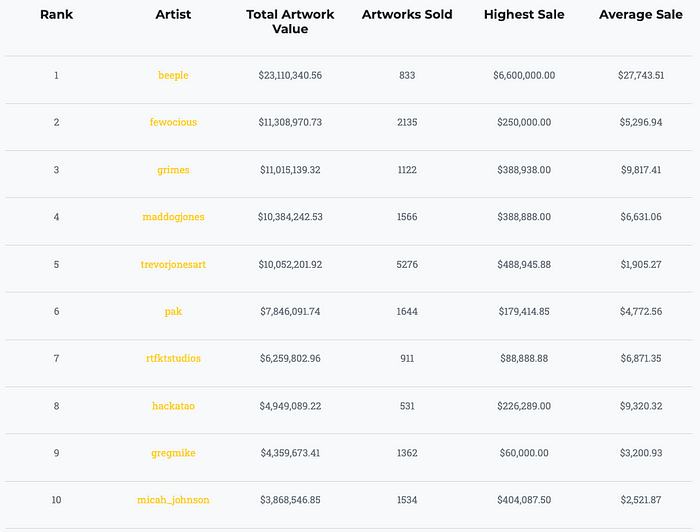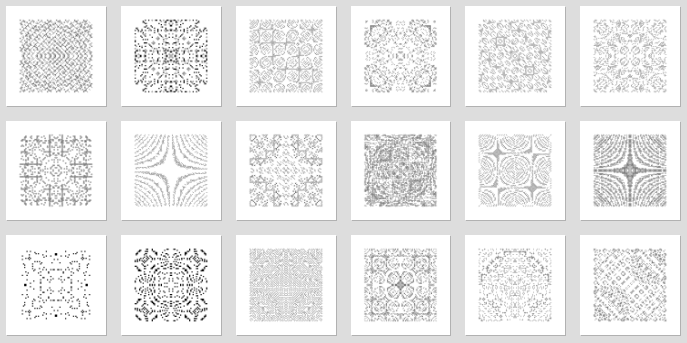🖌️ Ethereum's Artistic Renaissance
How a generation of creators reinvented art's business model and made history on the Ethereum blockchain.
We may be witnessing a new chapter in Art History. I'm not the first to "feel it".
Utopian visions of artists monetising their work direct-to-fanbase, through smart contracts, have been memed into reality. Big names are making millions, small creators are banking thousands. Either way, a big improvement over what anyone has ever squeezed out of Spotify or Youtube.
Bitcoin’s rise has been compared to the Protestant Reformation. There’s an apt analogy there for what's happening with Ethereum too.
But it is not the only one. Below are some historical parallels that can help shine light on the cultural frenzy surrounding crypto-art and NFTs👇

⚜️ Framework 1: Florence, ~1400
The Renaissance happened after the Middle Ages and the Crusades. Between 1348 and 1351, the Black Death killed something close to half of Europe. There was a shift of perspective among survivors. Less authority emanated from the religious, more emphasis was placed on the individuals.
Trade flourished on the North Mediterranean. The Gold Florin (first pure gold coin since the Roman Empire) made Florence the heart of Italy.
We can't tell for sure what led to the Renaissance, but a few drivers are rarely downplayed. Among them, the invention of the press; the rise of the Florin; and the financial acumen of the Medici family.
The Medici built the largest bank in Europe. They popularised double entry bookkeeping (recording both credits and debits for each account) and the corporate structure of a “holding”.
But their genius was in arbitrage — moral arbitrage.

Religion proclaimed usury was sinful. The Medici weren't inclined to lend away money to collect interest. So they invented private letters of credit, paper cheques (bills of exchange), and helped merchants pay cashlessly over long distances. Rather than interest, the bank profited on the spreads charged upon clients all around Europe. Theologists were fine with it; the Church was happy to earn its share.
The rest of the history is known: Donatello, Michelangelo, Giotto, Da Vinci and many other masters were financed by the Medici. They even helped invent the piano and the high heels — their influence spreading beyond fine arts, into science and fashion.
🗼 Framework 2: Paris, 1920s
Again, a dark period (war), a breakthrough in communication technologies and its influence on artistic style spurred a movement that changed the course of history.
Photography was invented. Benjamin (1935) would famously write that when the work becomes technically reproducible, its aura is all that remains of value. Art was free from the pursuit of figurativism. Oriental influences pushed the modernists to dive into abstractionism. To explore the realms of the dreams, the feelings, the senses.
Although Modernism was very much a collection of artist-led movements— epitomised by Picasso, Braque & Modigliani jamming at Montparnasse's cafes — collectors and curators were far from unimportant.

Behind Picasso, there was Apollinaire (who coined "cubism"). Behind Dali, there was Breton (who memed surrealism into existence, and whose OG manuscripts sell for a Cryptopunk's worth).
Some of the most expensive paintings auctioned nowadays belong to this era, and it's curious to note a good chunk of its legacy lies in American hands.
💂 Framework 3: London, 1980s
The YBA movement is one of the most misunderstood chapters in Art History. It is highly financialised, visually repealing and intellectually brazen.
Two men — Larry Gagosian and Charles Saatchi — are largely responsible for it. Gagosian is one of the most powerful gallerists in the world. Saatchi is an advertising magnate and ostentatious collector.
In 1992, Saatchi "revealed" a generation of young British artists, which accelerated the trajectory of style towards production lines and brand identity. Damien Hirst, Cindy Sherman & co. became notorious for the gratuitously violent imagery, pornography, and a desire to push beyond "common decency". Fine art materials were replaced by debris. The artists' discourse went from pompous to brash.

Creators were media-savvy, sometimes adversarial, and had a knack for intrigue (think proto-influencers). Like the time when Charles threatened to dump a large number of his Hirsts, including his dead frozen shark, so that Hirst’s gallery was cornered into buying them back for way more than they had sold (The History of the Saatchi Gallery).
The YBA turned out to be a millionaire factory, having produced some of the richest living artists of our era. It reaffirmed the power of collectors and curators in bending public perception. Hirsts and Shermans are held by the most esteemed collections in the world.
Remember the shark Saatchi once threatened to dump? Having originally paid $50K, he ended up flipping it for ~$7M.
🔹 Ethereum, 2020s
Saatchi's etherian version is Pablo Rodriguez-Fraile, a Miami-based art visionaire.
Like Charles, Pablo flipped an artwork from some dozen thousands of dollars to ~7M. The differences: it was not a frozen shark, but a 10-seconds GIF. And it took him a mere few weeks, rather than 13 years, to bank profits.
Ethereum's artistic Renaissance has been deemed a bubble by many. It's hard to counter-argue. But a crash won't mean it's not historical.

Seemingly everyone in the creatorsphere — from renown Beeple to 18-year-old Fewocious to Logan Paul — is splurging on NFTs. Non-fungible tokens. Digital certificates of authenticity.
"NFTs" were coined in 2017, and brought to existence in the form of CryptoKitties and CryptoPunks. Last year they resurged, mostly under the guise of "crypto-art".
Cool kids sell them in limited edition auctions, paired with anything from digital images to physical framed editions, sneakers and concert tickets. In anticipated virtual-only events. That raise millions in cryptocurrency.

This is not a milestone in Art History for the shattering prices. Neither because Christie's is buying into it. But rather because of the archetypical contours.
Crypto-art is born of an original philosophical spark; a breakthrough in financial technology and native artistic techniques — a novel medium. Pretty much what some art historians have yearned for over the past 30 years.
The philosophical spark here is that everything has become fake-able. From Tom Cruise videos to modernist masterpieces, reality has become indistinguishable from hyper-reality.
What photography did to surrealists, deep fakes did to crypto-artists.
The only art whose authenticity one can objectively attest is cryptographically signed, digital stuff.
Crypto-art goes beyond the modernist inquiry of "What is real?" and "What is art?" to ask "What does it really mean to own art?".
It doesn't matter that art's reproducible; this has been a thing for long. What matters is that now there's a novel way of possessing, of status signalling on the meta-verse, of showing off without having to give away who you are.
The native artistic technique here is on-chain encoded, generative art —eternally reproducible, provably unique and perfectly attributable.

The financial innovation is self-evident. People are able to angel invest in culture. The final forms of the messy, ongoing business model experiment don't matter —history won't care if the legacy of NFTs is dynamic pricing schemes, open secondary markets or perpetual royalties for artists.
What matters is that artists have found a direct, profitable avenue to their fans, bypassing galleries and forcing the industry to reinvent itself— and that there's a whole new meme-infused language for describing the shift.
It may be foolish to FOMO-in and build a collection by now. But probably more foolish to ignore that there's some serious historical sh*t going on.
Detractors proclaim crypto-art is dumb & environmentally costly. Statists question the medium's legality. Maximalists, its morality.
Remember the Medici's moral arbitrage, back in the 1400s? A variant is in place. The cults condemn the speculatory state of things. They portray edgy artists as sinners.
But history is unequivocal: between sinners and saints, the difference is merely narratives, perspective, and a good dose of incentive alignment.

